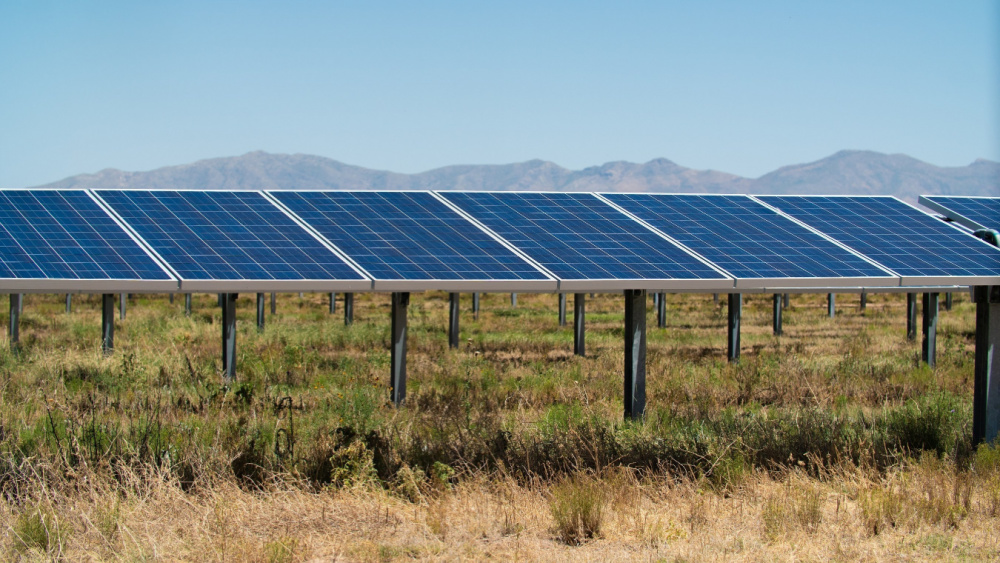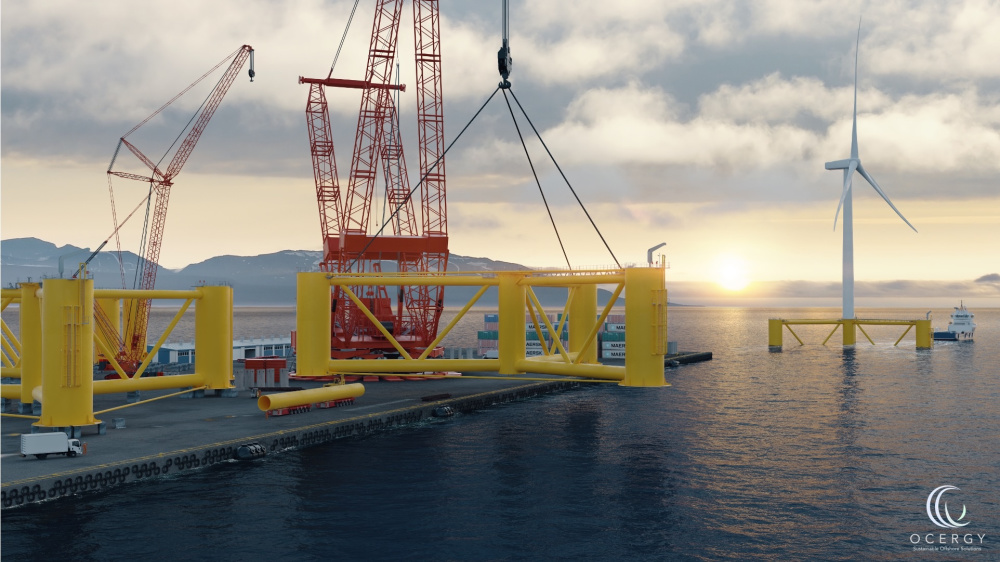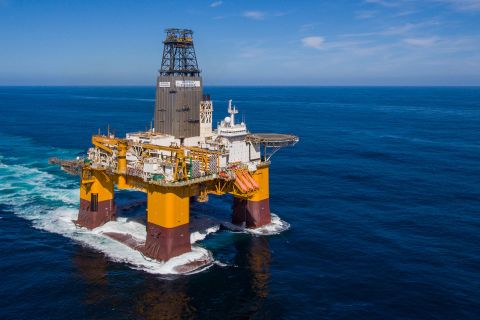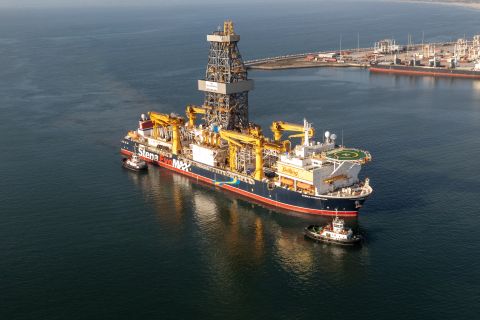The oil and gas sector is stepping up its sustainability efforts, opting for wind and solar energy to power operations and the electric grid.
One of the latest moves came from Pioneer Natural Resources in the Permian Basin, where the company said Oct. 27 it is working with NextEra Energy Resources to develop a 140-megawatt (MW) wind generation facility on Pioneer’s Midland County surface acreage. The Hutt Wind project, supported by a power purchase agreement (PPA) with Pioneer in which Targa Resources Corp. will participate, is scheduled to begin operations in 2024. Targa jointly owns natural gas processing infrastructure in the Permian Basin.
Through a Targa PPA, Pioneer said it is also participating in the 160-MW Concho Valley Solar project, which began delivering electricity this month. Located near San Angelo in Tom Green County, Texas, Concho Valley Solar is a joint development of Merit SI and Komipo America Inc. Targa announced in November 2021 it had entered agreements to source renewable electricity from Concho Valley Solar.
“This renewable energy and the renewable energy credits generated will reduce our Scope 2 emissions and contribute to our emission reduction goals,” Pioneer Natural Resources Scott Sheffield said Oct. 28 on the company’s earnings call.
The projects are expected to provide Pioneer with low-cost renewable power.
“We are pleased to have NextEra as a partner and they have unmatched experience in developing wind and solar resources,” he added. “We continue to evaluate further wind and solar development on Pioneer’s owned surface acreage in addition to these two initial projects.”
Here’s a look at some of this week’s other renewable energy news.
Batteries
Trafigura, EVelution to Build Cobalt Plant in Arizona
Commodity trader Trafigura has partnered with EVelution Energy, an electric vehicle (EV) battery materials processing company, to develop a battery-grade cobalt sulfate processing facility in Yuma County, Arizona.
Trafigura said Oct. 24 the two companies had signed a memorandum of understanding. As part of the agreement, Trafigura will help EVelution with raw materials supply and help market the company’s production of cobalt sulfate and nickel sulfate.
“With an expected annual capacity of 7,000 tonnes of cobalt, the new processing facility will be able to meet 40% of the expected 2027 cobalt demand in relation to U.S.-domestic production of electric vehicles,” Trafigura said in a news release. “An expansion to include a nickel sulfate processing facility is also being studied.”
Construction of the facility is scheduled to begin in 2023.
Hyundai Breaks Ground on $5.5 Billion EV, Battery Facility in Georgia
Hyundai Motor Group has broken ground Oct. 25 on a $5.54 billion EV and battery manufacturing facility in Georgia.
The factory, located in Bryan County, is expected to start commercial production in the first-half of 2025 with an annual capacity of 300,000 units, the company said in a news release.
Hyundai Motor Group has been ramping up its electrification efforts aiming to sell 3.23 million full EVs annually by 2030.
“With the additional EV and battery production capabilities in the U.S., the group aims to maintain its position as one of the top three EV providers in the U.S.,” the company said.
Lithium-ion Battery Recycling Pilot Production Line Opens in Texas
Clean-tech company Princeton NuEnergy Inc. (PNE) has teamed with Wistron Corp. subsidiary Wistron Green Tech to open a lithium-ion battery (LIB) direct recycling pilot production line in McKinney, Texas.
“As the first end-to-end, production-scale direct recycling line in the U.S., Princeton NuEnergy’s proprietary technology directly processes LIB’s ranging from consumer electronics to full EV battery packs,” PNE said Oct. 25 in a news release.
The facility is capable of recycling up to 500 tons per year of lithium-ion battery manufacturing scrap and end-of-life batteries, using a patented low-temperature plasma-assisted process that reclaims and repairs cathode material from the batteries.
Hydrogen
Centrica, HiiROC Plan to Inject Hydrogen at Gas-fired Power Station
U.K.-based Centrica Business Solutions will inject hydrogen into one of its existing gas peaking plants as part of a 12-month project with HiiROC, marking what is billed as a first for the region.
The two aim to better understand the role of hydrogen in power production, Centrica said Oct. 24 in a news release. The project will take place at Centrica’s 49-MW gas-fired plant at Brigg, Lincolnshire, where blends of natural gas mixed with no more than 3% of hydrogen will be burned initially in turbines. That percentage will incrementally rise to 20%.
“Longer term, the vision is to move towards 100% hydrogen and to deploy similar technology across all gas-fired peaking plant,” Centrica said.
Hydrogen will be supplied by HiiROC, which converts biomethane, flare gas or natural gas into hydrogen using the thermal plasma electrolysis process.
The project is scheduled to begin in third-quarter 2023. It is partly funded by a grant from the Net Zero Technology Centre’s Open Innovation Program.
Sweden’s H2 Green Steel Gains Support for $3.45B Debt Funding for Plant
Swedish steel venture H2 Green Steel said on Oct. 24 it had secured support $3.45 billion in debt financing to build a hydrogen-powered steel plant in northern Sweden.
The company said it had received conditional commitments for senior debt of 3.3 billion euros from state-owned AB Svensk Exportkredit and five commercial banks, while some other lenders had issued letters of intent for credit guarantees.
“The commitment letters and approvals remain subject inter alia to completion of final due diligence and documentation,” the company said in a statement.
The construction of the plant in the town of Boden will be financed through a combination of debt and equity. The site is scheduled to start production at the end of 2025.
The company’s customers are all but one located in Europe and have not been affected by the ongoing political turmoil, CEO Henrik Henriksson told Reuters.
H2 Green Steel targets 5 million tonnes in annual production by 2030 that could reduce 95% of carbon dioxide emissions compared with normal steelmaking.
French Lithium Mine Project Unveiled in Electric Car Race
French minerals company Imerys unveiled plans on Oct. 24 to develop a lithium mine in central France that it said could be a leading contributor in Europe’s quest for electric-vehicle battery materials.
Electric cars such as Renault’s Zoe are key to the European Union’s strategy to cut emissions, and the bloc is trying to reduce reliance on battery supplies from Asia.
Imerys aims produce 34,000 tonnes of lithium hydroxide annually for at least 25 years from 2028 at an existing mine at Beauvoir, north of Clermont-Ferrand.
That would be one of Europe’s largest lithium mining projects, the company said, and enough to supply around 700,000 electric car batteries a year—a sizeable chunk of the government’s target of 2 million EVs per year produced in France by 2030.
Solar
Engie Adds to Renewable Development Pipeline

Houston-based Engie North America Inc. has grown its solar and battery storage capacity by 6 gigawatts (GW) with the acquisition of more than 30 projects from greenfield developer Belltown Power U.S.
The acquisition announced Oct. 27 comes as the regional hub of France’s Engie looks to accelerate its role in the transition to lower carbon energy resources. The 33 projects, which are in various stages, span across the U.S. and include 2.7 GW of solar with 0.7 GW of paired storage and 2.6 GW of stand-alone battery storage.
“The 3.3 GW of battery storage projects will be a critical enabler of flexibility and supports the balance of the grid to improve its reliability and resilience,” said Dave Carroll, chief renewables officer and head of Engie North America.
Wind
TotalEnergies, Casa dos Ventos Form Wind, Solar JV
TotalEnergies and Brazil’s renewable energy developer Casa dos Ventos (CDV) have created a joint venture (JV) to develop, build and operate CDV’s portfolio of wind and solar energy assets.
The JV, announced by TotalEnergies on Oct. 26, also has the right to acquire from CDV current and new projects for development, according to a news release. The company’s renewable portfolio includes 700 MW of onshore wind capacity in operation, 1 GW of onshore wind under construction, 2.8 GW of onshore wind and 1.6 GW of solar projects under well advanced development, the release said.
“This market fits our strategy of taking advantage of the growth of the deregulated power markets, which is crucial to the energy transition,” Patrick Pouyanné, chairman and CEO of TotalEnergies, said in a statement. “With a total of 12 GW in operation, construction and development, both wind and solar, this transaction is an additional step in TotalEnergies ambition to reach 100 GW of renewable production by 2030 and in its transformation into a sustainable and profitable multi-energy company.”
JV Selects Ocergy Technology for Salamander Floating Wind Project

Technology company Ocergy’s pre-FEED foundation design has been selected for the Salamander floating wind project off Scotland’s East Coast, Ocergy said Oct. 28 in a news release.
The 100-MW floating wind farm is being developed jointly by Ørsted, Simply Blue Group and Subsea7.
Ocergy’s OCG-Wind floating wind turbine foundation is designed to support very large wind turbines of more than 10 megawatts. The company’s OCG-Wind semi-submersible platform’s hull comprises three outside circular columns connected mechanically with trusses to a central column that supports the wind turbine, the company said.
“The Salamander project is of paramount importance for our consortium and the floating offshore wind industry,” said Ocergy CEO Dominique Roddier. “This project will demonstrate that the premise of delivering one unit per week, week after week is achievable. This is the last major industry hurdle before the deployment of large, commercial-scale, floating wind projects.”
A feasibility study was carried out, examining the design, technical performance, fabrication, assembly, operations and installation of the OCG-Wind for Salamander, according to the release. The study, which now moves to the pre-FEED phase, also considered the compatibility of the OCG-Wind platform to the site, inclusive of performance, along with supply chain and local content management, identified schedule risks and overall project costs.
Danish Offshore Wind Power Developers Plan Major Capacity Increase
Denmark’s Ørsted and Copenhagen Infrastructure Partners (CIP) have teamed up to develop 5.2 gigawatts (GW) of offshore wind in Denmark, corresponding to more than double the country’s current installed capacity, the two companies said Oct. 25.
The total of four projects will be developed through the so-called open-door procedure where the developers takes initiative to build an offshore wind farm without a government tender.
“Ørsted and CIP hope that the projects can be built prior to and in parallel with the projects in the government tenders,” the companies said, adding that the projects might be feasible already by 2027 or 2028.
It is not yet certain that the partnership will be able to actually build the projects as they will need to obtain approval from authorities. Denmark today has 2.3 GW of offshore wind installed.
The 50/50 partnership is subject to merger clearance, which is expected before the end of 2022.
Oil and Gas Investor Executive Editor-at-large Nissa Darbonne, Reuters and Hart Energy staff contributed to this article.
Recommended Reading
Tech Trends: Halliburton’s Carbon Capturing Cement Solution
2024-02-20 - Halliburton’s new CorrosaLock cement solution provides chemical resistance to CO2 and minimizes the impact of cyclic loading on the cement barrier.
Sinopec Brings West Sichuan Gas Field Onstream
2024-03-14 - The 100 Bcm sour gas onshore field, West Sichuan Gas Field, is expected to produce 2 Bcm per year.
Less Heisenberg Uncertainty with Appraisal Wells
2024-03-21 - Equinor proves Heisenberg in the North Sea holds 25 MMboe to 56 MMboe, and studies are underway for a potential fast-track tieback development.
Stena Evolution Upgrade Planned for Sparta Ops
2024-03-27 - The seventh-gen drillship will be upgraded with a 20,000-psi equipment package starting in 2026.
Tech Trends: SLB's Autonomous Tech Used for Drilling Operations
2024-02-06 - SLB says autonomous drilling operations increased ROP at a deepwater field offshore Brazil by 60% over the course of a five-well program.






